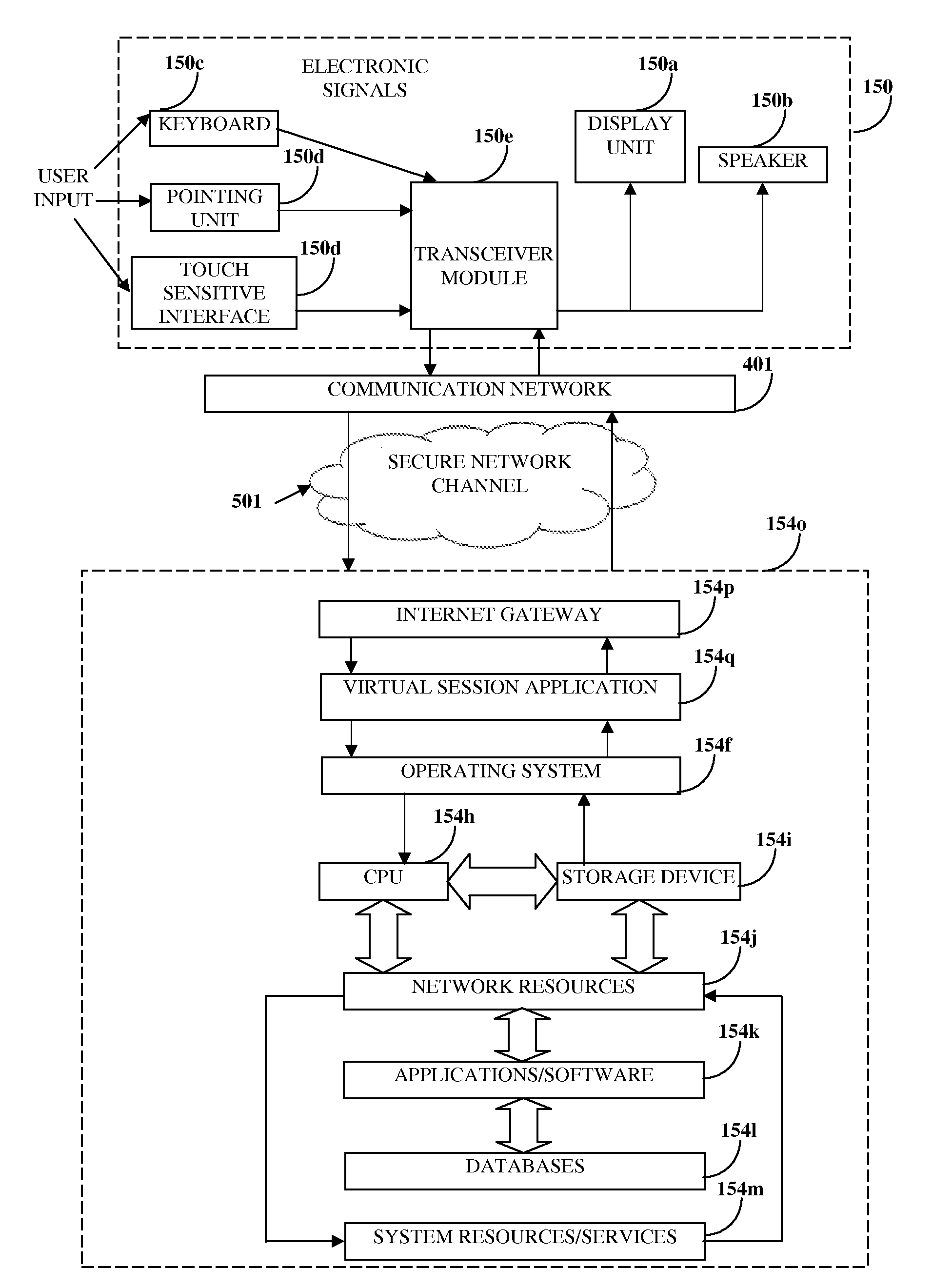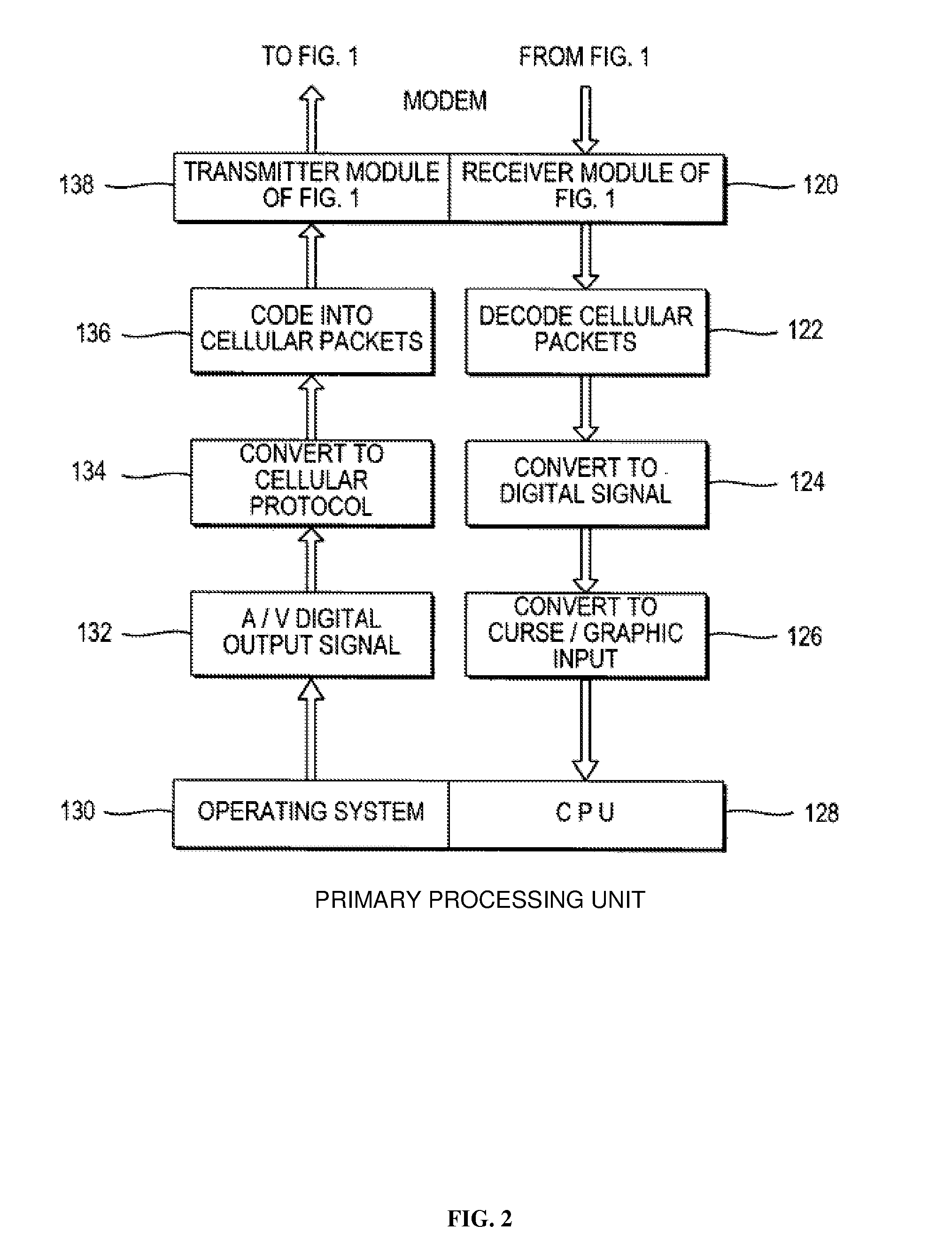Method And System For Operating A Primary PC From A Remote Pseudo-mobile PC
a primary pc and pseudo-mobile technology, applied in the field of computer networking, can solve the problems of limited mobile computing functionality, physical bulk of the laptop pc, and limited processing power of hand-held pda devices
- Summary
- Abstract
- Description
- Claims
- Application Information
AI Technical Summary
Benefits of technology
Problems solved by technology
Method used
Image
Examples
Embodiment Construction
[0047]The foregoing summary, as well as the following detailed description of the invention, is better understood when read in conjunction with the appended drawings. For the purpose of illustrating the invention, exemplary constructions of the invention are shown in the drawings. However, the invention is not limited to the specific methods and instrumentalities disclosed herein.
[0048]The method and system disclosed herein provides a mobile input / output device for a remote user using to virtually access a primary processing unit and process data on the primary processing unit. The mobile input / output device functions as a captive mobile terminal of the primary processing unit and establishes a virtual session with the primary processing unit. The primary processing unit comprises a virtual session application which creates a virtual presence of a user of the mobile input / output device in the primary processing unit, thereby establishing the virtual session. The method comprises tra...
PUM
 Login to View More
Login to View More Abstract
Description
Claims
Application Information
 Login to View More
Login to View More - R&D
- Intellectual Property
- Life Sciences
- Materials
- Tech Scout
- Unparalleled Data Quality
- Higher Quality Content
- 60% Fewer Hallucinations
Browse by: Latest US Patents, China's latest patents, Technical Efficacy Thesaurus, Application Domain, Technology Topic, Popular Technical Reports.
© 2025 PatSnap. All rights reserved.Legal|Privacy policy|Modern Slavery Act Transparency Statement|Sitemap|About US| Contact US: help@patsnap.com



